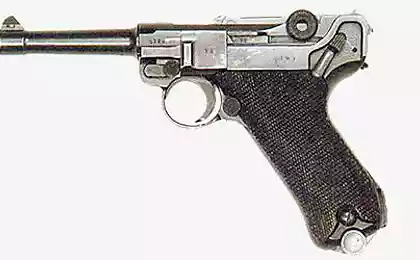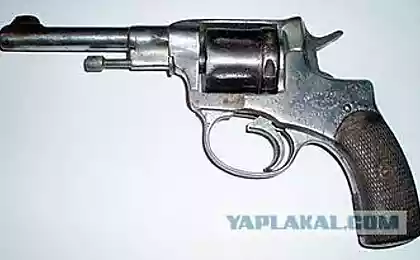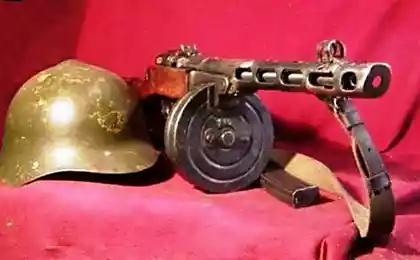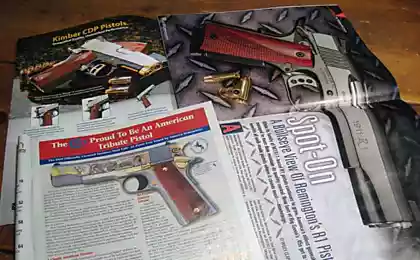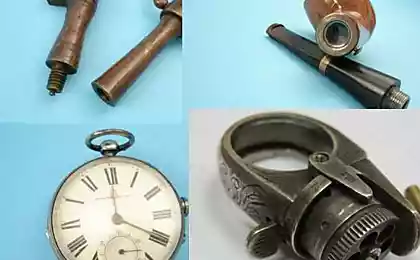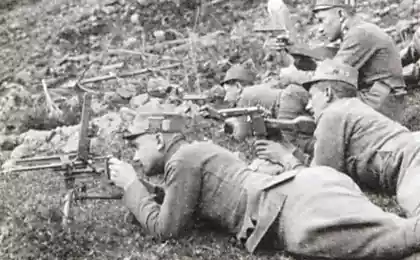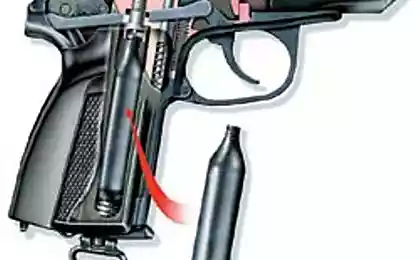1151
Gun Mars
One of the most unusual pistols late 19th century can be called an automatic pistol Mars (Gabbet-Fairfax Mars Automatic Pistol). It was very massive and powerful weapon, but it is extremely difficult, in terms of design. Gun Mars is one of many dead-end branches in the evolutionary history of small arms. The gun was issued a short time, from the first prototype in 1898 and to the cessation of production in 1907.
24 photos
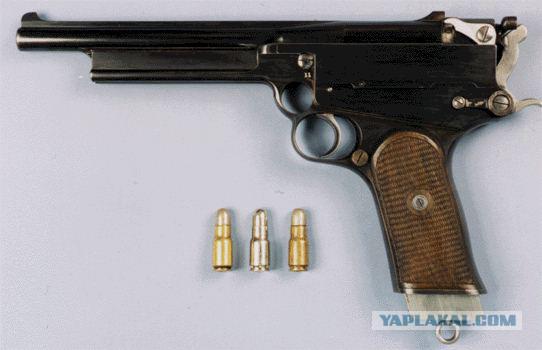
To illustrate the size and power of the gun Mars, compare it with the popular large-caliber pistols.
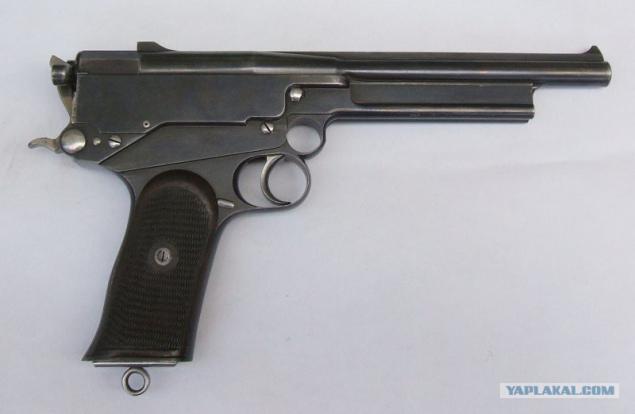
As Table 0.45 caliber Mars 25% heavier and 30% more than the Colt 1911, its characteristics are similar to those of the pistol LAR Grizzly caliber 0.45 Winchester Magnum.

Features Layout gun Mars have greatly increase the length of the barrel, without increasing the overall dimensions of weapons. Increasing the length of the barrel substantially increased the range and accuracy of aiming weapons.
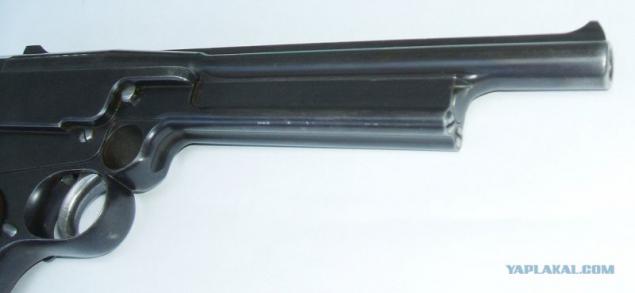
Mars developed automatic pistol English engineer William Hugh Gabbet-Faerfaks (Hugh William Gabbett-Fairfax). The designer was fascinated by the idea of creating a self-loading weapons, use the principle of automation, based on the long course of the trunk. This principle provides a high margin of safety of weapons, especially when using high-power ammunition.
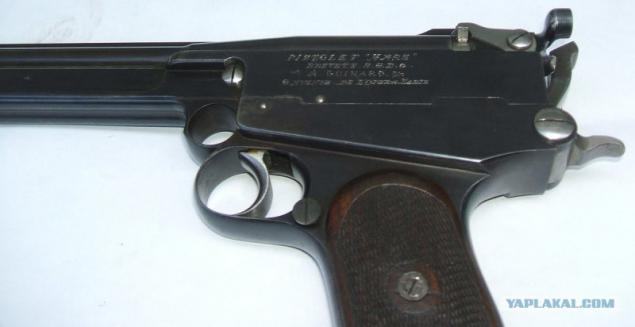
Prototypes pistols Mars resembled the design of the gun Frommer 1912. The barrel and the shutter moves to the rearmost position chained and unlock after the bullet left the barrel bore. It provides high initial velocity of a bullet and the safety of the shooter. Next trunk rushed forward, removing the sleeve. Then I move the bolt forward, grasping the new cartridge from the magazine and dosylaya it in the trunk.
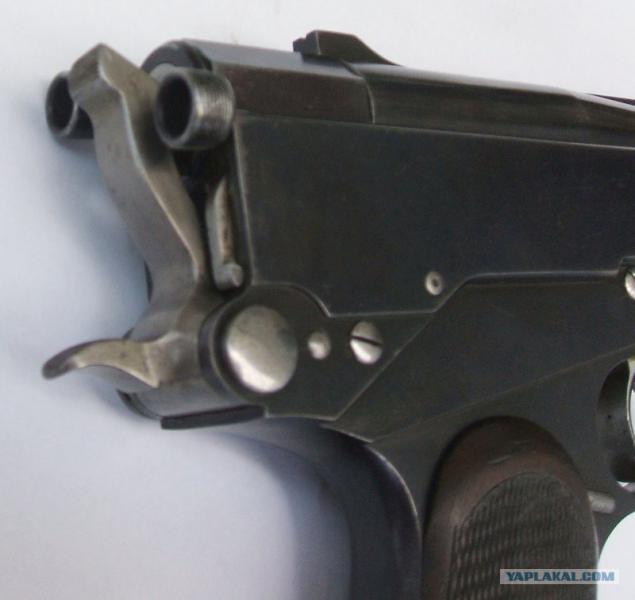
07
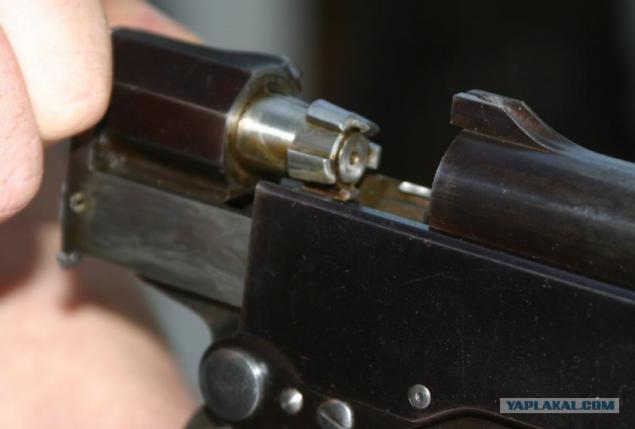
However bolt pistol Mars for secure locking has four protrusions that when rotating engages the grooves in the barrel and the barrel during long delays encountered working mechanism pistol and distortions in chambering rounds.
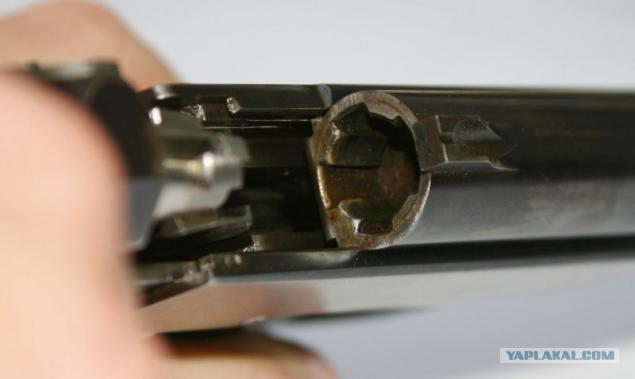
09
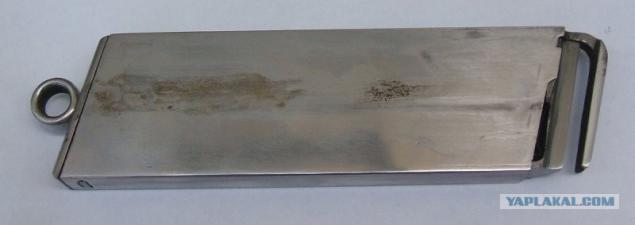
10

To ensure the reliability of the design changed as follows. The usual shop and feeder cartridges was fundamentally redesigned. Now the cartridge out of the store special gripper was removed when moving the barrel back to the gate, ie, cartridge from the magazine initially moved back.
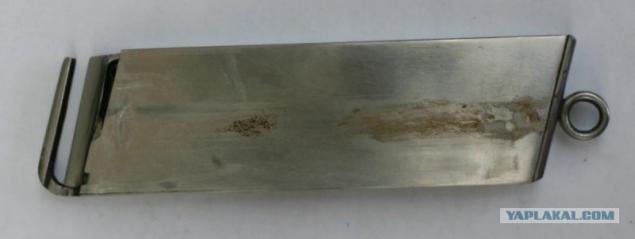
Then, a special mechanism (elevator) lifted the cartridge and put it on the level of the barrel and slide it into the chamber shall be sent.
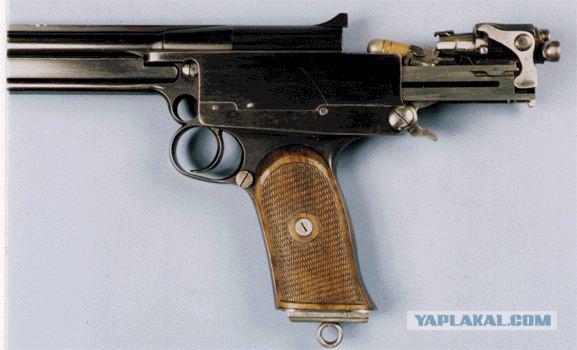
This mechanism is well illustrated by drawings of the patent on the weapon. The second major change was the modernization of the mechanism and the shutter release trunk. If the prototype are automatically disconnected when the rearmost position, the later versions of the work release mechanism agreed with the descent gun.
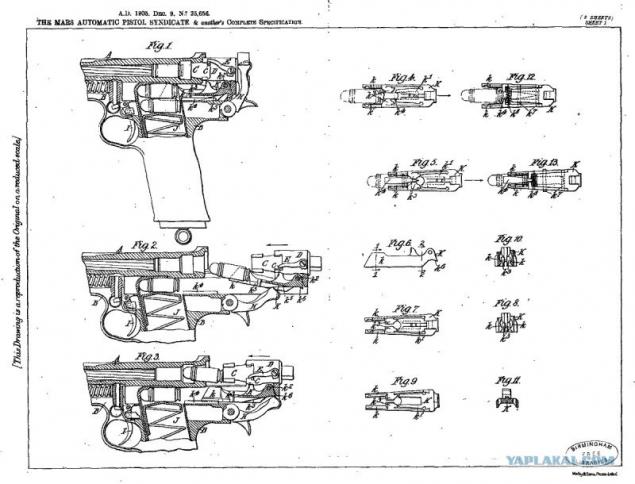
Now if the shooter after shooting will not release the trigger, the gate will be in the rearmost position and did not rush forward. However, this is considerably increased effort on the descent, which negatively affected the accuracy of shooting.
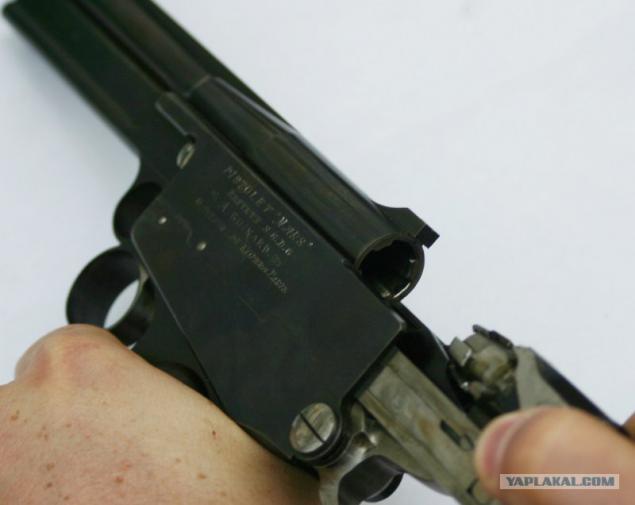
15
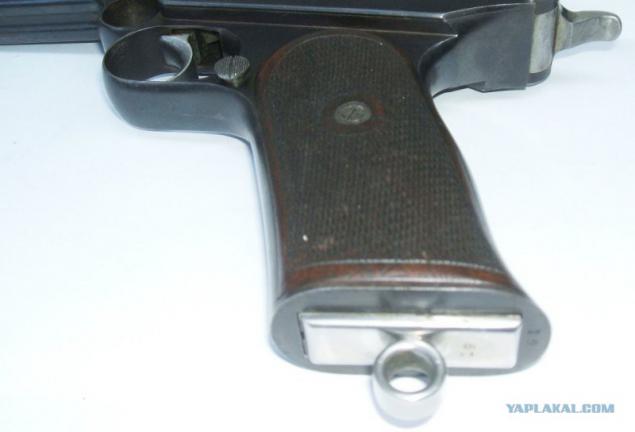
Mars was the first pistol manufactured by Webley and Scott (Webley & Scott), a leading manufacturer of revolvers in England at the time. It is for this reason that the gun is sometimes called the Webley Mars. Company, seeing the success of Bergman pistols and BORCHARD, just wanted to take this niche market handguns. They signed a contract for the manufacture of one of the first prototypes of the gun Mars, but further cooperation is not extended. In 1900, Hugh William Gabbet-Faerfaks registered a patent on the design of the gun, which has become its standard model. October 8, 1901, he received a US patent №684055.
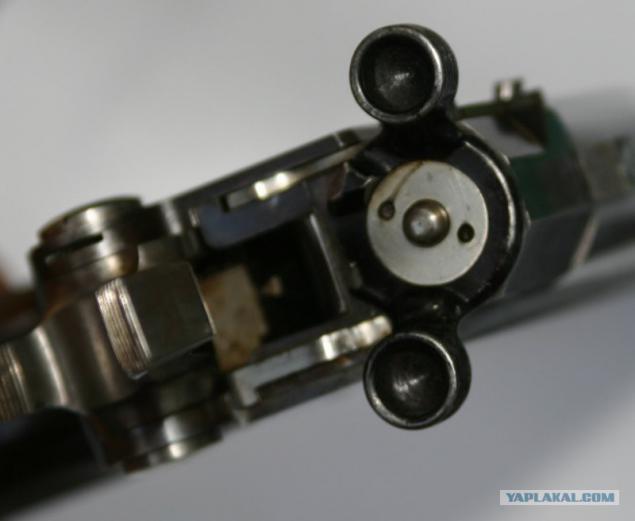
Series production began in 1901 under the leadership of Gabbet-Faerfaks when it was released about 56 pistols of various calibers. The weapon has been fixed sights, consisting of front and rear sights. Cheeks handles made of wood. There is evidence that a gun tried to implement attachable butt.
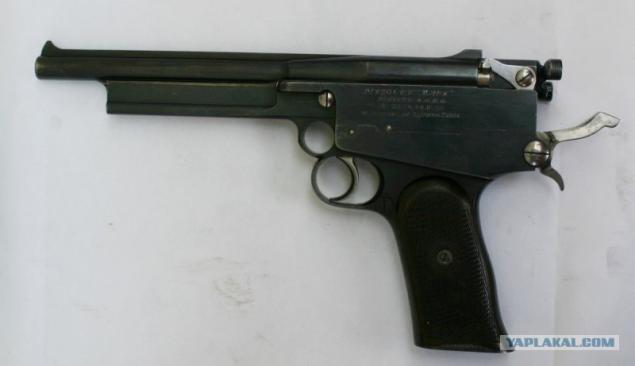
The first gun, released Webley was calculated under the cartridge 0.360 Mars (9 × 26 mm), this cartridge and continued to be used later. The cartridge has a sleeve bottle-shaped and a 9 mm bullet. Next ordnance used in the gun Mars was the cartridge caliber .330 Mars (8, 5 × 26 mm). Pistol under the cartridge of this caliber has been manufactured for the military trials in France, and the pistol of 0.45 caliber (.45 Mars Long 11.2 × 28 mm) with a cylindrical sleeve was made to the British military trials. In order to cater to the military, complained of severe impact, some pistols were manufactured by Mars shorter cartridge .450 Mars Short (11.2 × 20 mm). Magazine capacity pistols 0.45-caliber ammunition was 8, pistols 0.360 Mars (9 × 26 mm) and .330 Mars (8, 5 × 26 mm) - 10 rounds.
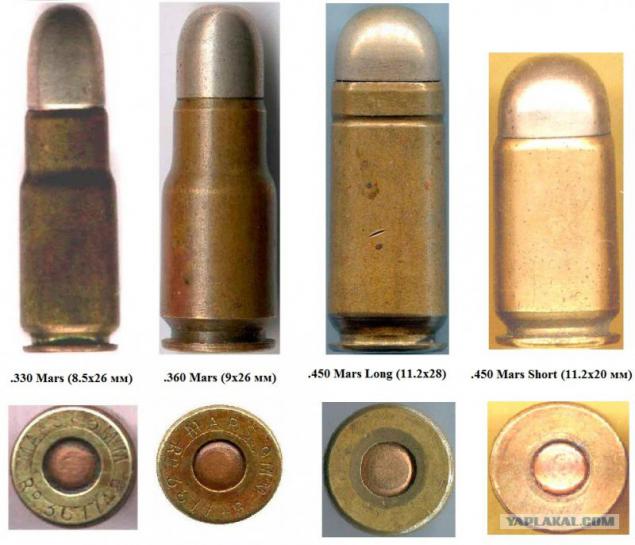
The photo shows the markings on the left side of the frame and the top of the barrel of a gun caliber Mars 8, 5 mm, produced for testing in France.
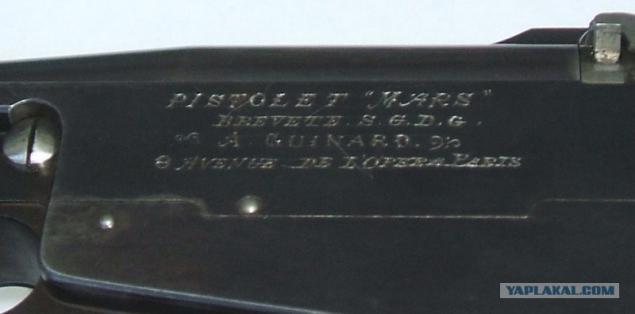
Until the last day of production was carried out relentlessly and other measures to improve and modernize the gun. Sometimes this leads to the fact that part of the gun having neighboring serial numbers were not interchangeable. The changes concerned the details of the trigger, barrel, bolt, magazine. Details weapons were trying to do better, making it easier to frame, the shutter and the front part of the trigger guard.

In the period from 1901 to 1903 showed a gun Mars for at least eight different military trials, trying to get a contract for serial production. Military experts have noted consistently high power and good precision weapons. Stopping power of a bullet fired from a gun Mars was beyond praise. However, a large mass of weapons, the complexity of the design of a pistol, a strong recoil and heavy descent negates all the positive sides of the gun. Military experts have noted that sometimes the cartridge cases is pulled directly into the face of an arrow, to the same ammunition for the gun were very rare and were not used in the other arms.
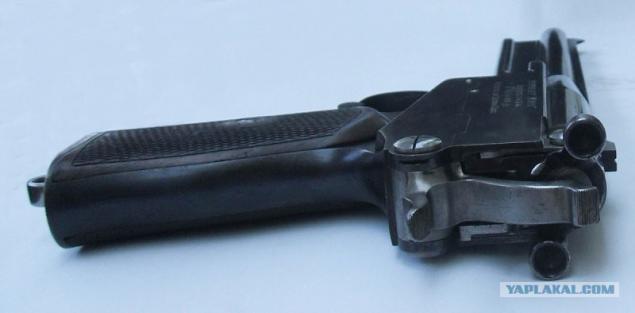
By the end of 1903 it became clear that the military contracts for the manufacture of gun Mars will not be able to receive and Hugh William Gabbet-Faerfaks finally goes bankrupt. His patents were transferred to a consortium of lenders under the name Mars Automatic Pistol Sindikat, I try to resume the sale of weapons and attempt to recoup their investment.
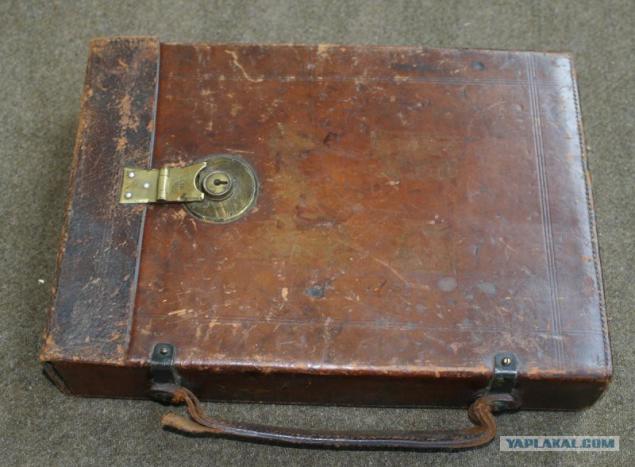
At the end of 1905 an engineer Clement Brown (Clement Brown), a former employee of the company Gabbet-Faerfaks filed a patent for a number of improvements in the design of the gun. December 9, 1905, he received a British patent № 25656. Syndicate manufacturing orders improved gun local gunsmiths of Birmingham, which is used including the remaining stock of the gun. Attempts to sell the upgraded gun Mars in 1906, also did not succeed, and by the end of 1907 the Syndicate also became bankrupt and fell apart.
Total for the entire period of production was made about 80 pistols Mars, but there is no evidence that at least one of them has been sold on a commercial basis.
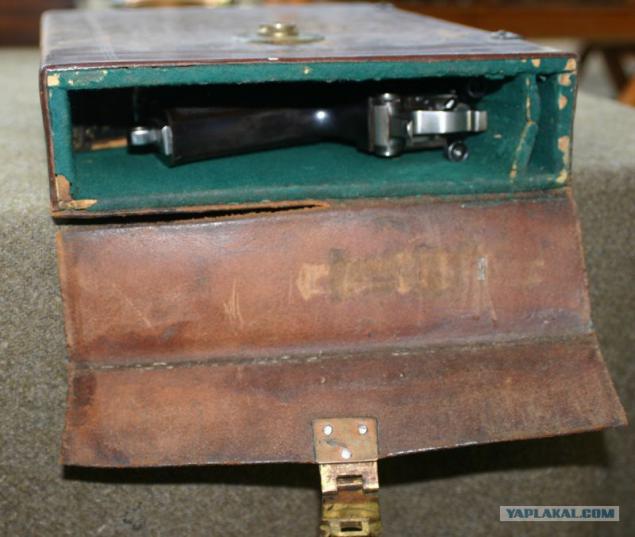
Thus ended the story of the most powerful and most controversial gun late 19th, early 20th century. We can only guess on the cost of the Mars pistols on the market of the collection of weapons.
topwar.ru/38318-pistolet-mars-gabbe...tic-pistol.html
All
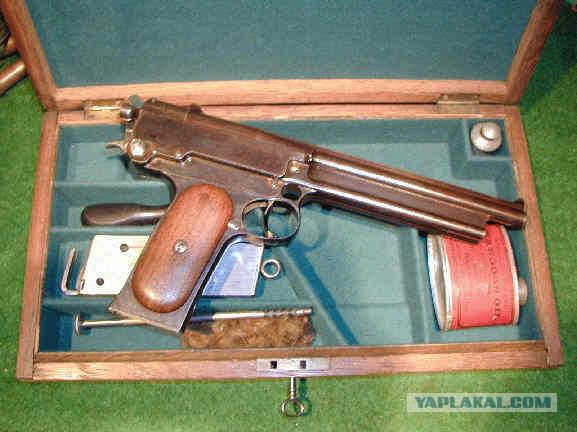
Source:
24 photos

To illustrate the size and power of the gun Mars, compare it with the popular large-caliber pistols.

As Table 0.45 caliber Mars 25% heavier and 30% more than the Colt 1911, its characteristics are similar to those of the pistol LAR Grizzly caliber 0.45 Winchester Magnum.

Features Layout gun Mars have greatly increase the length of the barrel, without increasing the overall dimensions of weapons. Increasing the length of the barrel substantially increased the range and accuracy of aiming weapons.

Mars developed automatic pistol English engineer William Hugh Gabbet-Faerfaks (Hugh William Gabbett-Fairfax). The designer was fascinated by the idea of creating a self-loading weapons, use the principle of automation, based on the long course of the trunk. This principle provides a high margin of safety of weapons, especially when using high-power ammunition.

Prototypes pistols Mars resembled the design of the gun Frommer 1912. The barrel and the shutter moves to the rearmost position chained and unlock after the bullet left the barrel bore. It provides high initial velocity of a bullet and the safety of the shooter. Next trunk rushed forward, removing the sleeve. Then I move the bolt forward, grasping the new cartridge from the magazine and dosylaya it in the trunk.

07

However bolt pistol Mars for secure locking has four protrusions that when rotating engages the grooves in the barrel and the barrel during long delays encountered working mechanism pistol and distortions in chambering rounds.

09

10

To ensure the reliability of the design changed as follows. The usual shop and feeder cartridges was fundamentally redesigned. Now the cartridge out of the store special gripper was removed when moving the barrel back to the gate, ie, cartridge from the magazine initially moved back.

Then, a special mechanism (elevator) lifted the cartridge and put it on the level of the barrel and slide it into the chamber shall be sent.

This mechanism is well illustrated by drawings of the patent on the weapon. The second major change was the modernization of the mechanism and the shutter release trunk. If the prototype are automatically disconnected when the rearmost position, the later versions of the work release mechanism agreed with the descent gun.

Now if the shooter after shooting will not release the trigger, the gate will be in the rearmost position and did not rush forward. However, this is considerably increased effort on the descent, which negatively affected the accuracy of shooting.

15

Mars was the first pistol manufactured by Webley and Scott (Webley & Scott), a leading manufacturer of revolvers in England at the time. It is for this reason that the gun is sometimes called the Webley Mars. Company, seeing the success of Bergman pistols and BORCHARD, just wanted to take this niche market handguns. They signed a contract for the manufacture of one of the first prototypes of the gun Mars, but further cooperation is not extended. In 1900, Hugh William Gabbet-Faerfaks registered a patent on the design of the gun, which has become its standard model. October 8, 1901, he received a US patent №684055.

Series production began in 1901 under the leadership of Gabbet-Faerfaks when it was released about 56 pistols of various calibers. The weapon has been fixed sights, consisting of front and rear sights. Cheeks handles made of wood. There is evidence that a gun tried to implement attachable butt.

The first gun, released Webley was calculated under the cartridge 0.360 Mars (9 × 26 mm), this cartridge and continued to be used later. The cartridge has a sleeve bottle-shaped and a 9 mm bullet. Next ordnance used in the gun Mars was the cartridge caliber .330 Mars (8, 5 × 26 mm). Pistol under the cartridge of this caliber has been manufactured for the military trials in France, and the pistol of 0.45 caliber (.45 Mars Long 11.2 × 28 mm) with a cylindrical sleeve was made to the British military trials. In order to cater to the military, complained of severe impact, some pistols were manufactured by Mars shorter cartridge .450 Mars Short (11.2 × 20 mm). Magazine capacity pistols 0.45-caliber ammunition was 8, pistols 0.360 Mars (9 × 26 mm) and .330 Mars (8, 5 × 26 mm) - 10 rounds.

The photo shows the markings on the left side of the frame and the top of the barrel of a gun caliber Mars 8, 5 mm, produced for testing in France.

Until the last day of production was carried out relentlessly and other measures to improve and modernize the gun. Sometimes this leads to the fact that part of the gun having neighboring serial numbers were not interchangeable. The changes concerned the details of the trigger, barrel, bolt, magazine. Details weapons were trying to do better, making it easier to frame, the shutter and the front part of the trigger guard.

In the period from 1901 to 1903 showed a gun Mars for at least eight different military trials, trying to get a contract for serial production. Military experts have noted consistently high power and good precision weapons. Stopping power of a bullet fired from a gun Mars was beyond praise. However, a large mass of weapons, the complexity of the design of a pistol, a strong recoil and heavy descent negates all the positive sides of the gun. Military experts have noted that sometimes the cartridge cases is pulled directly into the face of an arrow, to the same ammunition for the gun were very rare and were not used in the other arms.

By the end of 1903 it became clear that the military contracts for the manufacture of gun Mars will not be able to receive and Hugh William Gabbet-Faerfaks finally goes bankrupt. His patents were transferred to a consortium of lenders under the name Mars Automatic Pistol Sindikat, I try to resume the sale of weapons and attempt to recoup their investment.

At the end of 1905 an engineer Clement Brown (Clement Brown), a former employee of the company Gabbet-Faerfaks filed a patent for a number of improvements in the design of the gun. December 9, 1905, he received a British patent № 25656. Syndicate manufacturing orders improved gun local gunsmiths of Birmingham, which is used including the remaining stock of the gun. Attempts to sell the upgraded gun Mars in 1906, also did not succeed, and by the end of 1907 the Syndicate also became bankrupt and fell apart.
Total for the entire period of production was made about 80 pistols Mars, but there is no evidence that at least one of them has been sold on a commercial basis.

Thus ended the story of the most powerful and most controversial gun late 19th, early 20th century. We can only guess on the cost of the Mars pistols on the market of the collection of weapons.
topwar.ru/38318-pistolet-mars-gabbe...tic-pistol.html
All

Source:
